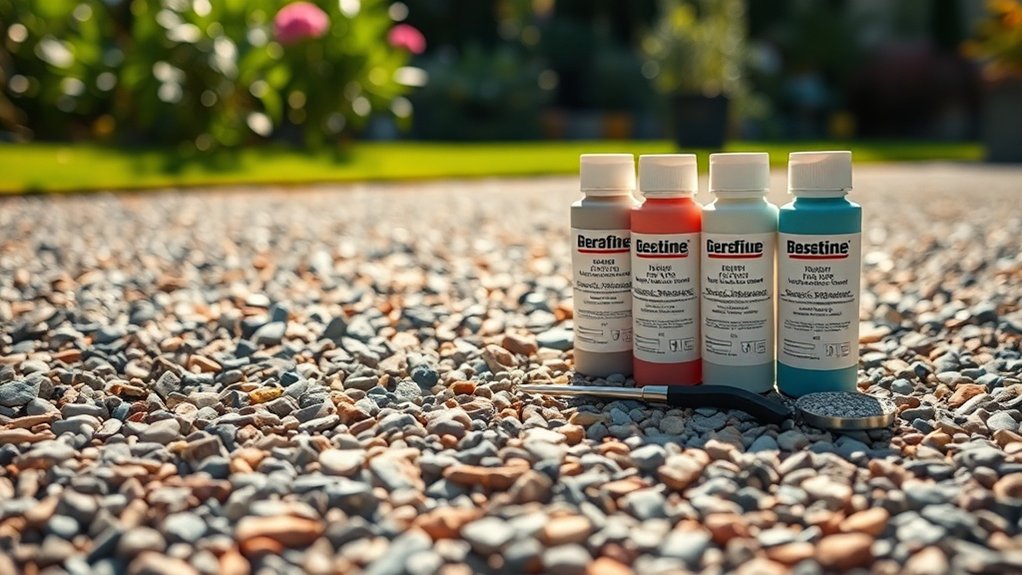To address resin-bound gravel issues, begin with quality resin binders like ROMEX or Gravel-Lok for strong adhesion. Opt for UV-resistant resins to prevent fading, and ensure you select top-quality aggregates to improve drainage. For maintenance, use stiff brooms and pressure washers to keep surfaces tidy. Remember to wear proper protective gear during application. With the right products, you can enhance the durability and appearance of your gravel surfaces, while uncovering even more effective solutions along the way.
Key Takeaways
- Use high-quality resin binders like ROMEX and Gravel-Lok for strong adhesion in resin-bound gravel applications.
- Choose UV-resistant resins from brands such as ArtResin to prevent yellowing and ensure colour stability over time.
- Regularly clean gravel surfaces with mild detergents or a pressure washer to effectively remove debris and stains.
- Select larger, high-quality aggregates to improve drainage and avoid clogging in resin-bound systems.
- Use proper maintenance tools, like stiff brooms and pressure washers, to extend the lifespan of resin-bound gravel surfaces.
Essential Resin Products for Bonding Issues
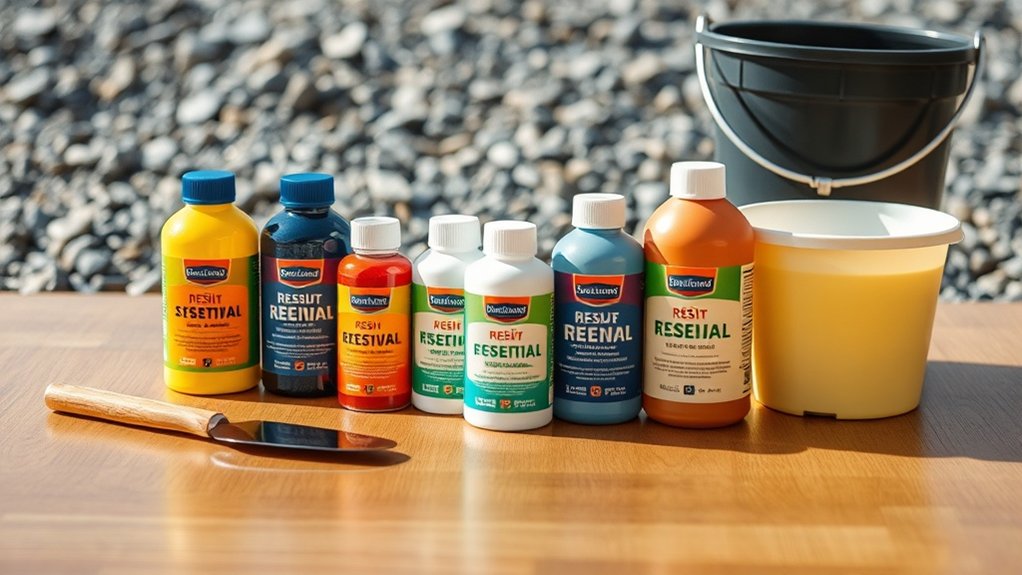
When addressing bonding issues with resin-bound gravel, selecting the right products is essential for a durable and attractive finish.
Begin with high-quality resin binders such as ROMEX’s patented systems or Gravel-Lok’s polyurethane-based options, which ensure excellent adhesion and compatibility with aggregates. These binders provide a strong bond for gravel and stones while remaining clear and solvent-free. Additionally, using CANA Pave™ can enhance the overall aesthetic appeal of your landscape. The benefits of using resin-bound systems include superior longevity and less frequent maintenance compared to other options.
For increased structural support, consider using honeycomb grids like CANA Gravel™, which help reduce substrate movement.
It’s important to match your resin choice to the type and colour of aggregate, allowing for design flexibility without sacrificing texture.
UV-Resistant Resins for Surface Discoloration
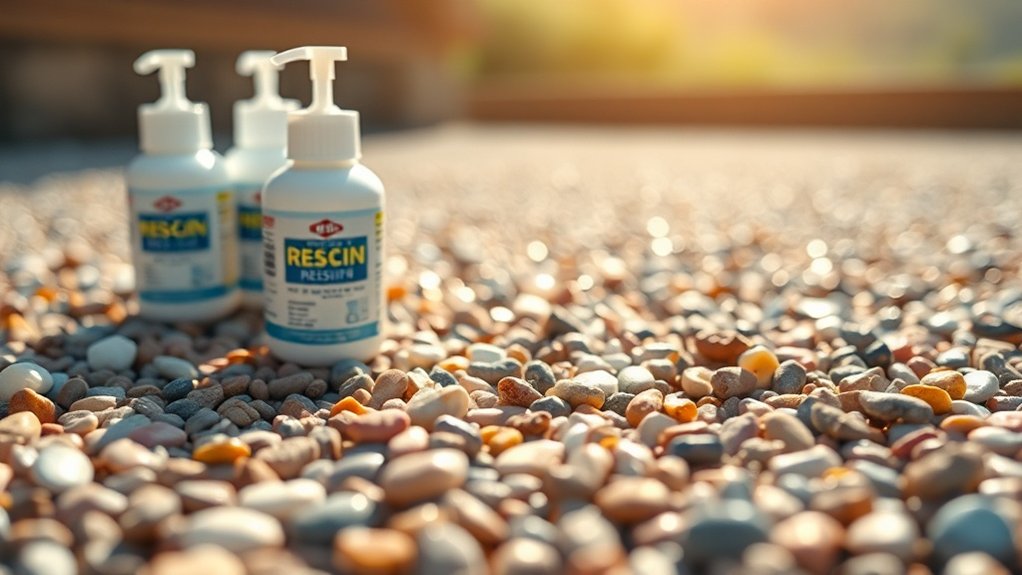
Choosing the right resin is crucial not only for bonding but also for preventing surface discolouration due to UV exposure. To minimise yellowing, select UV-resistant resins that incorporate advanced UV stabilisation techniques, such as UV stabilisers and Hindered Amine Light Stabilizers. These additives help maintain the resin’s colour, ensuring surfaces stay vibrant over time. Brands like ArtResin and Resinwerks offer high-quality options that, while more expensive, provide excellent protection against degradation. It’s important to apply and cure the resin correctly; excessive heat can worsen discolouration. For optimal results, consider using UV-protective topcoats and UV-stable sealants to further safeguard your resin-bound gravel paths from harmful UV rays. Additionally, keeping in mind that all resins will likely experience some yellowing due to natural aging, so taking preventive measures is essential for long-lasting clarity. Moreover, using UV-resistant resin ensures effective management of surface wear in British weather conditions.
Effective Cleaning Solutions for Stone Preparation
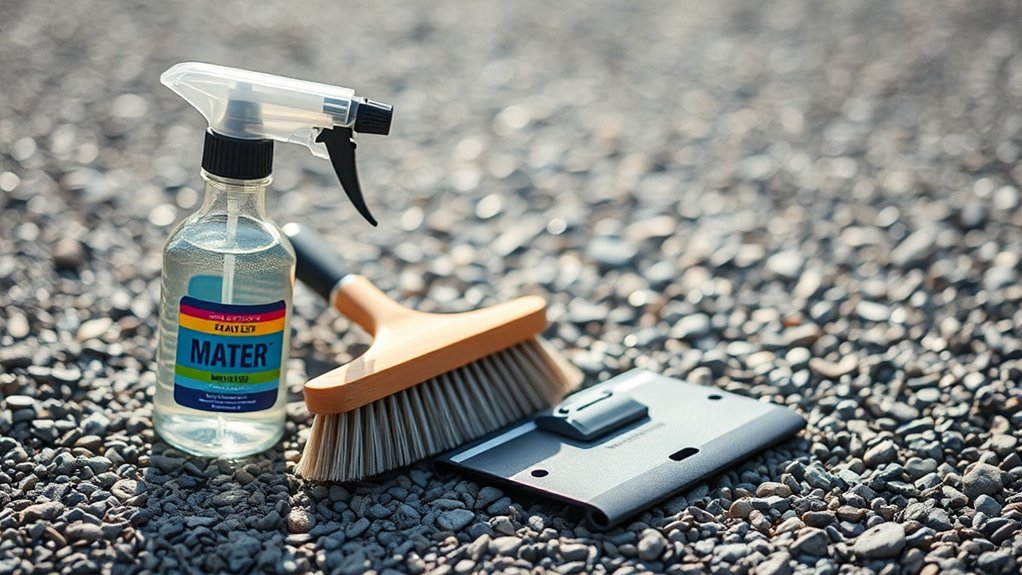
To ensure your stone surfaces are well-prepared for use, effective cleaning solutions are crucial. Using the right cleaning techniques helps maintain surfaces and prolong their lifespan. Here’s a straightforward guide:
| Cleaning Method | Key Details |
|---|---|
| Surface Debris Removal | Sweep regularly with a stiff broom. |
| pH-Neutral Cleaners | Use mild detergents diluted in warm water. |
| Pressure Washing | Keep the pressure below 150 bar and use a flat nozzle. |
| Stain Treatment | For stubborn stains, apply white spirit. |
| Routine Cleaning | Clean at least once a month and regularly assess the surfaces. Additionally, regular inspections help determine the cleaning needs based on dirt exposure. |
Regular maintenance is essential for resin driveways to prevent avoidable damage and ensure longevity.
High-Quality Aggregates for Improved Drainage
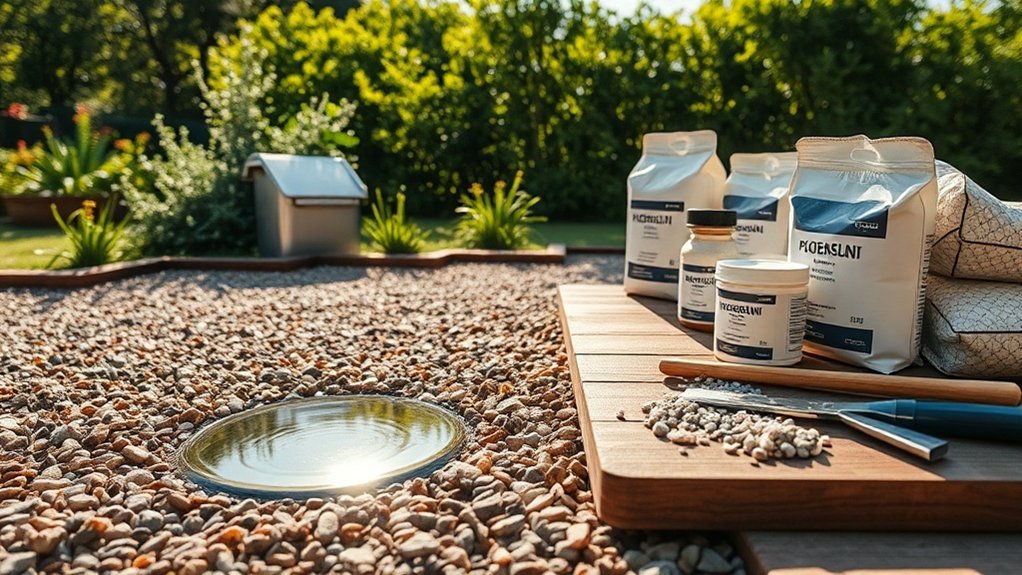
High-quality aggregates are essential for improving drainage in resin-bound surfaces. The choice of aggregate significantly affects permeability; larger aggregates create spaces that allow water to drain quickly.
It’s advisable to use high-quality natural stone aggregates with angular edges, as they interlock well with the resin, enhancing both durability and drainage. Washed and graded aggregates ensure consistent permeability and help prevent clogging over time.
Mixing different aggregate sizes can optimise packing density while keeping enough voids for water flow. Using porous mixtures not only boosts drainage but also meets Sustainable Urban Drainage Systems (SUDS) standards, which can help reduce flood risks and maintain the integrity of your resin-bound surfaces.
Weather Protection Gear for Resin Application
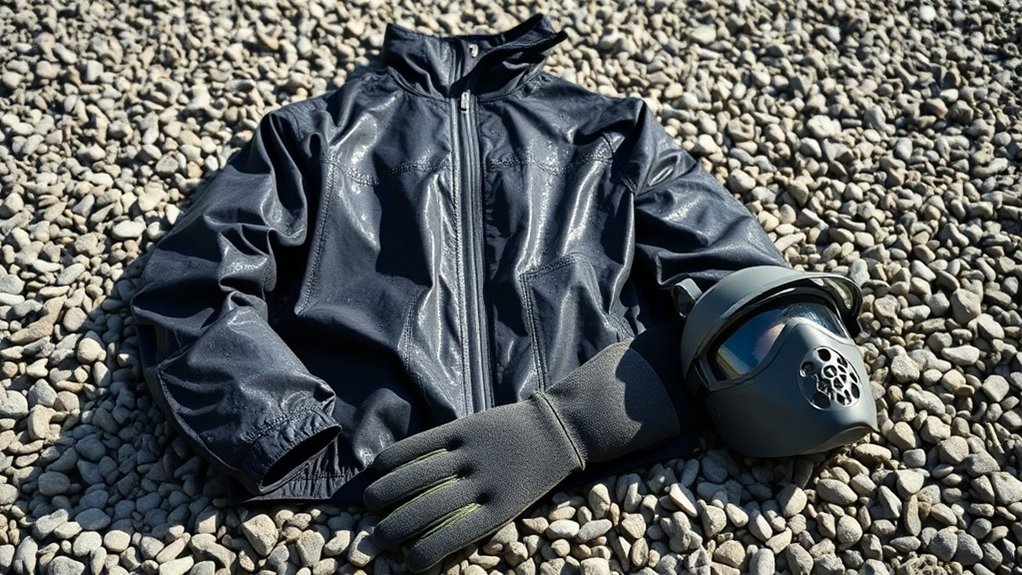
When applying resin, it’s crucial to protect yourself from unpredictable weather. Use a sturdy gazebo or waterproof tent, preferably at least three metres wide, to shield your workspace from unexpected rain and moisture.
Keep an eye on the weather forecast to find dry spells of 24 to 48 hours for your resin work. Clear any debris and moisture from your site to ensure a clean surface for bonding. Lay down ground protection to prevent contamination and secure edges against wind-blown debris.
In colder temperatures, opt for winter-grade resins and consider using portable heaters to maintain optimal mixing and curing temperatures.
With the right protective measures, you can achieve a strong and lasting finish.
Maintenance Tools for Longevity and Care
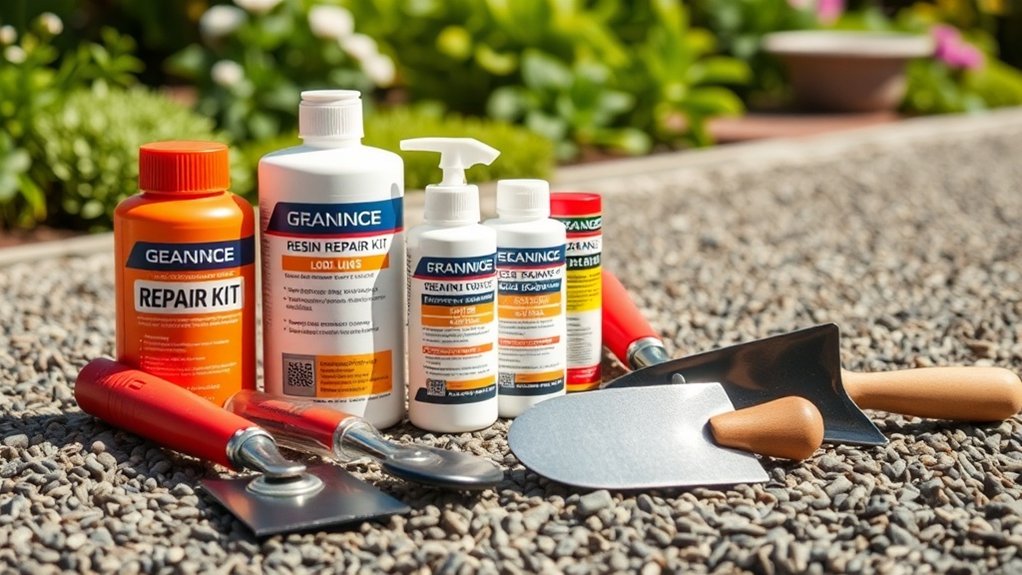
To keep your resin-bound gravel surfaces in top condition, having the right maintenance tools is essential for longevity and performance.
Here are the key tools you should have:
- Stiff Brooms and Brushes – Regular sweeping helps prevent moss and debris from accumulating.
- Pressure Washers – Use flat nozzle pressure washers set at 150 bar to effectively remove stains without harming the gravel.
- Microfibre Cloths and Buckets – These are important for cleaning tools like trowels, ensuring no resin hardens on them.
Proper tool storage is also crucial; keeping your maintenance equipment organised can prolong its lifespan and ensure you’re always prepared.
With the right tools and practices, you can maintain the pristine appearance and durability of your resin-bound gravel surfaces.
Structural Repair Kits for Air Brick Obstructions
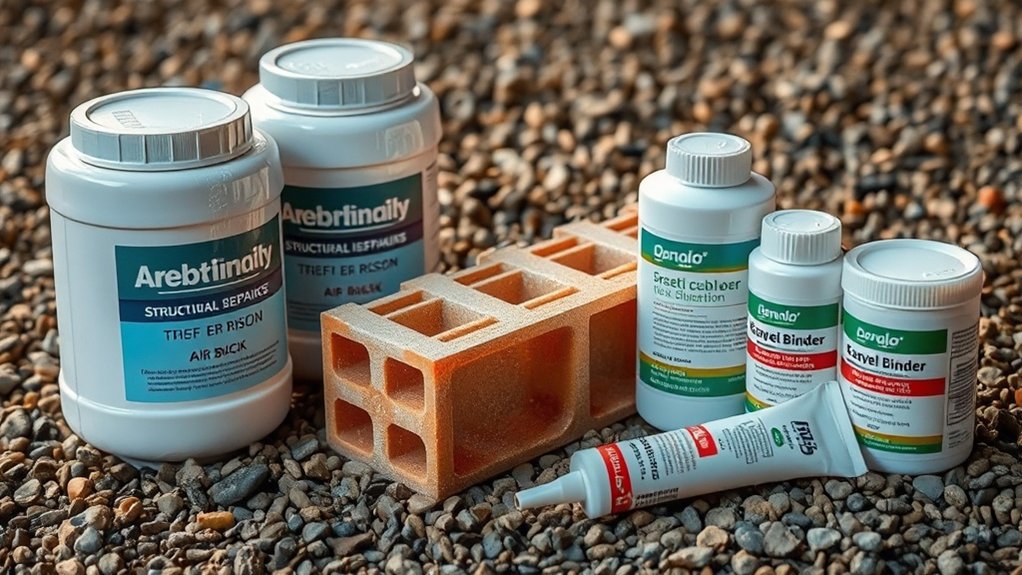
When dealing with obstructions in air bricks, it’s important to find access solutions that minimise disruption to your gravel surface.
Using minimally invasive techniques allows for effective repairs without damaging the surrounding area.
With the right structural repair kits, you can ensure proper airflow and improve durability, all while keeping your workspace tidy and efficient.
Air Brick Access Solutions
To effectively tackle obstructions in air bricks, it’s important to use structural repair kits specifically designed for this task.
These kits simplify the installation and maintenance of air bricks, ensuring the structural integrity of your property.
Here are three main advantages of using these repair kits:
- Reinforcement: The Stitch-Tie Bar system improves stability in cracked masonry, helping to prevent further damage.
- Ease of Use: No special skills are needed for installation, making it ideal for DIY enthusiasts.
- Aesthetic Continuity: You can apply matching top mortar right away for a smooth and seamless finish.
Minimal Invasive Techniques
Addressing obstructions in air bricks requires innovative solutions that minimise disruption while ensuring effective repairs.
Minimal invasive techniques, such as structural repair kits, allow you to tackle cracks and voids without extensive digging. These kits use epoxy injection to deliver low-viscosity, fast-curing resins directly into the affected areas, ensuring quick bonding and sealing.
For added support, carbon fibre reinforcement can be used to stabilise shifting structures and redistribute loads.
Many products are designed for DIY enthusiasts, complete with essential accessories like static mixers and injection ports for ease of use. You can even walk on the repaired areas shortly after application, allowing you to return to your normal activities swiftly, all while guaranteeing long-lasting protection against water and chemical intrusion.
Frequently Asked Questions
How Can I Prevent Resin From Washing Away in Rain?
To stop resin from washing away in the rain, consider using resin additives that improve grip. Additionally, implement effective drainage solutions. Ensure surfaces are properly graded and allow sufficient curing time to strengthen the bond and protect against water damage. For instance, if you’re working on a patio, make sure the surface slopes away from your home to direct rainwater effectively.
What Should I Do if My Driveway Has Pooling Water?
If your driveway has pooling water that looks like a little lake, think about installing drainage solutions such as channel drains or French drains. Leveling the surface can also help redirect water, keeping your driveway functional and looking good all year round.
How Often Should I Clean My Resin-Bound Surface?
For proper maintenance of your resin-bound surface, aim to clean it weekly. Give it a deep clean 3 to 4 times a year using a mild detergent, and consider using a medium-pressure washer twice a year to keep it looking its best.
Can I Use Regular Gravel for Resin-Bound Installations?
No, you cannot use regular gravel for resin-bound installations. It’s crucial to use gravel that is compatible; without proper encapsulation, your DIY resin project may become unstable and lead to unsightly surface problems, compromising both durability and appearance. Make sure to choose the right materials!
What Are the Signs of Structural Issues in Resin Driveways?
Signs of structural issues in resin driveways include visible cracking and uneven surfaces. Watch out for deep cracks, sunken patches, or bumps, as these can signal underlying foundation problems that need prompt attention.
Conclusion
In the world of resin-bound gravel, every crack and stain represents an opportunity for improvement. With the right products, you can not only repair but also revitalise your outdoor surfaces. Picture the satisfaction of seeing a beautifully restored path, with each stone shining brightly. Don’t let problems persist—utilise the tools available to uncover the beauty beneath. Your ideal outdoor space is closer than you think.
